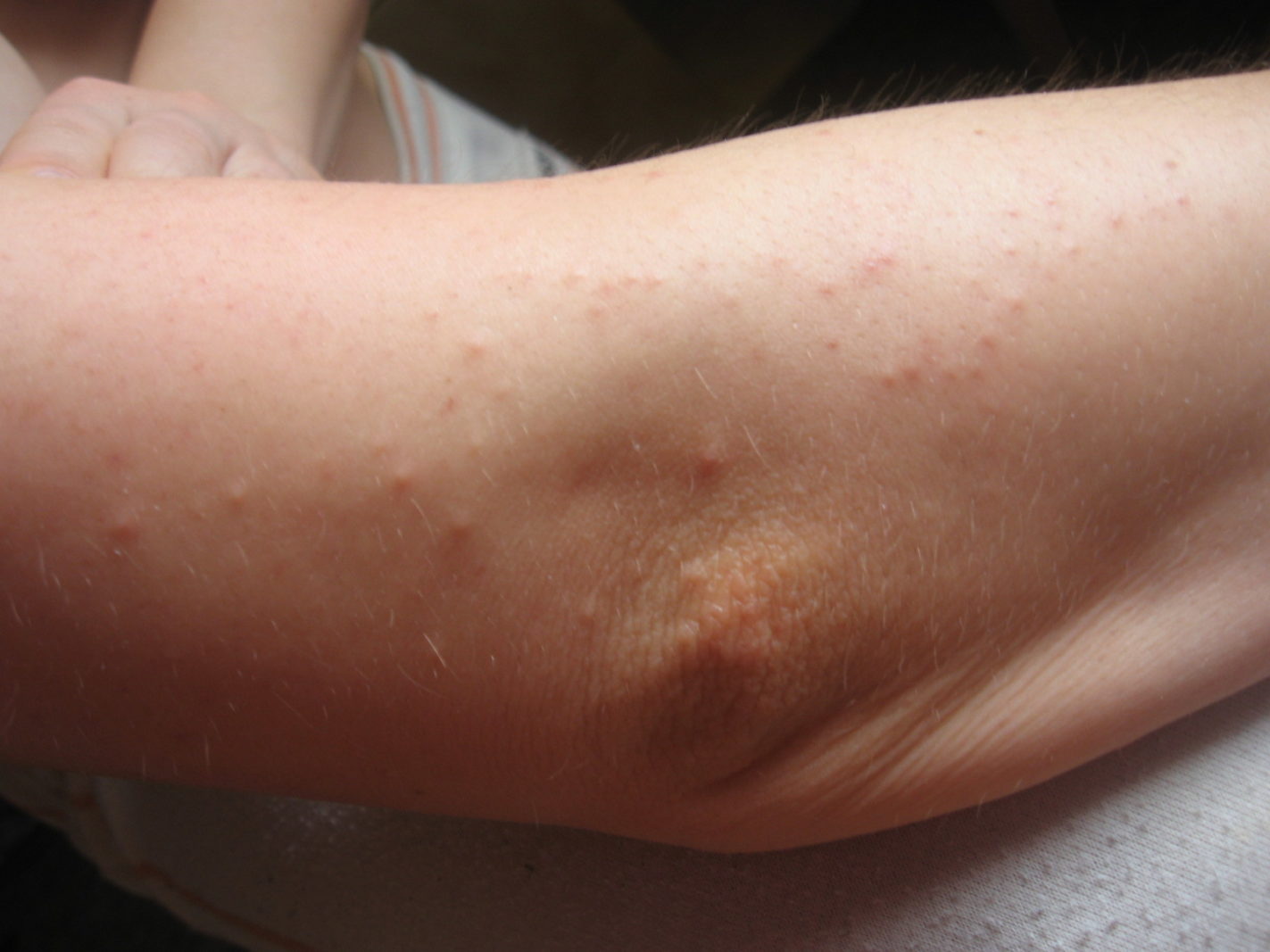What is Keratosis Pilaris (KP)?
Keratosis pilaris (KP) is a genetic disorder of keratinization of hair follicles of the skin. It is extremely common (keratosis pilaris affects nearly 50-80% of all adolescents and approximately 40% of adults), and is a benign condition that manifests as small, rough folliculocentric keratotic papules, often described as chicken bumps, chicken skin, or goose-bumps, in characteristic areas of the body, particularly the outer-upper arms and thighs. However, KP can appear virtually anywhere on the body. In general, keratosis pilaris is frequently cosmetically displeasing but medically harmless. So, don't panic! Why Do I Get It? The etiology of keratosis pilaris is not fully known. However, a definite association of hyperkeratinization has been established. Hyperkeratinization is an excess formation or buildup of keratin, and is thought to cause the abrasive goose-bump texture of the skin. In patients with keratosis pilaris, the process of keratinization (the formation of epidermal skin) is found to be faulty. One theory is that surplus skin cells build up around individual hair follicles. The individual follicular bumps are often caused by a hair that is unable to reach the surface and becomes trapped beneath the keratin debris. Often, patients develop mild erythema (redness) around the hair follicles, which is indicative of the inflammatory condition. Often, a small, coiled hair can be seen beneath the papule. Not all the bumps have associated hairs underneath, though. Seasonal variation is also sometimes described, with improvement of symptoms in summer months. Dry skin in the winter tends to worsen symptoms for some groups of patients. This again leads us back to the same issue with faulty keratinization, as skin that is dry tends to produce flakes. If these flakes of dead skin aren't being shed properly by your body or mechanically by you, they can become trapped. However, some new evidence suggests that it may not always be a keratinization issue. Keratosis pilaris may sometimes be caused by the circular hair shaft, which ruptures the follicular epithelium leading to inflammation and abnormal follicular keratinization. This means that KP in some people could actually be caused by a hair shaft defect. Of course, more evidence is still needed. Keratosis pilaris may also be associated with phrynoderma (follicular hyperkeratosis, as mentioned earlier), which may result from a vitamin A deficiency. In one study, signs of vitamin A and vitamin B-complex deficiency were present in 3.2% and 9.6% patients, respectively. These numbers are intriguing, but not high enough to suggest that there is a cause-and-effect relationship. Interestingly, phrynoderma is believed by some to be a manifestation of severe


